Who Is Jon Aramburu?
Venezuela’s Senior National Team had a surprising group stage at Copa América 2024 — 9/9 points vs Ecuador, Mexico, and Jamaica, and the main surprise superstar was Jon Aramburu.
The 21-year-old full-back from Real Sociedad enjoyed a great tournament as right-back and left-back, demonstrating why he is a potential top defensive duels specialist in different contexts.
This season, Aramburu could be a fantastic addition to Imanol Alguacil’s team and contribute a lot of tactical resources through his versatility and reading of the game.
Jon Aramburu was not only a good resource this Copa América; he is now what Venezuela has always needed as a right-back.
He is already one of the most promising full-backs in South America, and Real Sociedad could exploit this within their tactics if Aramburu becomes essential this season.
In this Jon Aramburu scout report & tactical analysis, we are going to provide an in-depth analysis of Aramburu performance at Copa América and what we have to expect about his development this year at La Liga, considering their defensive deficiencies.
Jon Aramburu Style Of Play
After playing defensive midfielder/centre-back during his formative years in Venezuela, then right centre-back/right-back/left-back for Deportivo La Guaira’s senior team, and finally shining offensively as right-back/right wing-back at Real Unión (1º RFEF), his eruption is real.
In the last months at Real Sociedad, he has competed at the elite level, taking advantage of his residual minutes.
While Venezuelan U23 youngsters who were already called up to Copa América, such as Telasco Segovia, “Tuti” Andrade, or Matías Lacava are also pushing for an essential position in Venezuela’s first team, Aramburu was the only imposing one — since he started once, he never disappeared from the XI, cementing his spot.
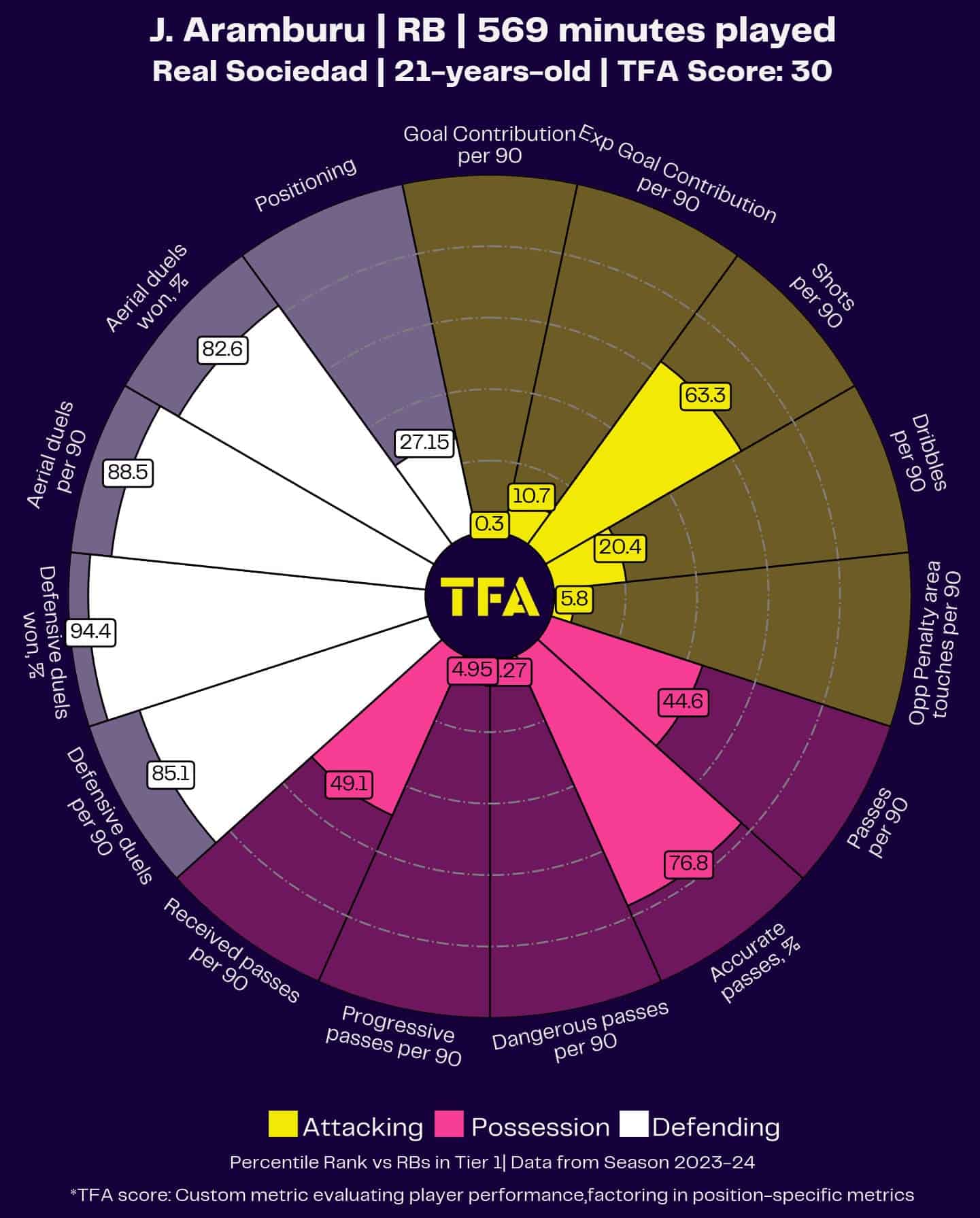
At Copa América, ‘Bocha’ Batista needed to build more stability in the defensive line looking for the matches vs Mexico (with Julian Quiñones as left-winger) or Canada (quarter-finals, with Jacob Shaffelburg as left-winger); Alexander Gonzalez (initially the starter right-back) was one of the most offensive full-backs in the tournament, while Miguel Navarro, although he has a good duels balance, kept reinforcing his offensive dynamic, finding ways to invade the channels with Yeferson Soteldo or creating automatisms to pull off crosses.
Venezuela needed a duel specialist to face the next challenges as a right-back, and Aramburu was the ideal profile.
Could Jon Aramburu Become Important With Imanol Alguacil At Real Sociedad?
Two of the main troubles Real Sociedad had vs Rayo Vallecano at the beginning of the La Liga season were the team’s inability to win defensive ground duels on the left side and the damage Rayo caused running in behind.
In that sense, Javi López, as left-back, won 1/5 duels, losing, in addition, a crucial duel vs Jorge De Frutos when Rayo scored 0-1— a result of bad timing, body shape, and low focus/intensity.
De Frutos’ constant menace was very difficult to defend in a match that needed a duels specialist defender to challenge this winger, something that will happen when other top wingers like Vinícius Jr, Lamine Yamal, or Nico Williams face Real Sociedad.
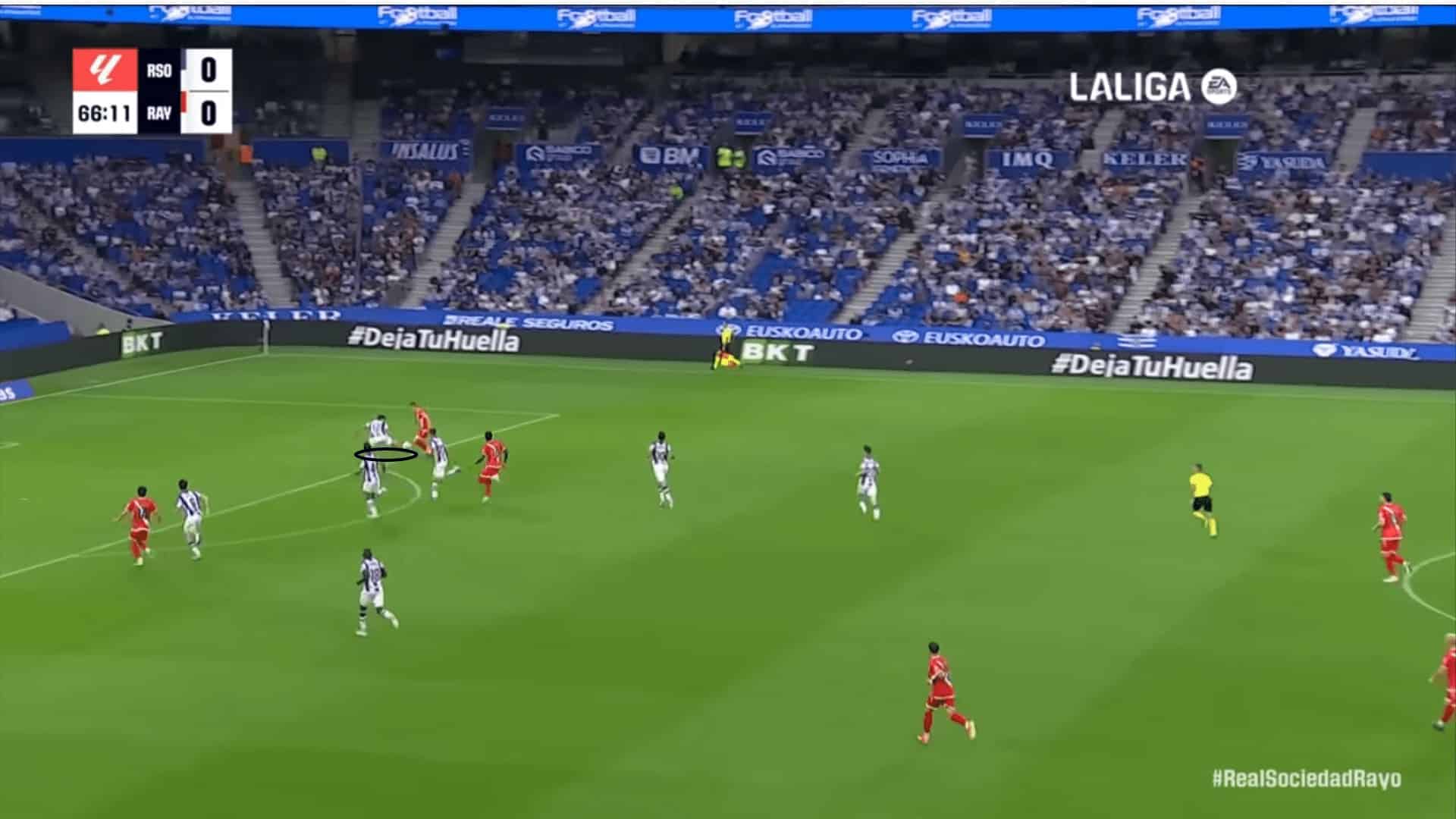
After Le Normand’s departure, Imanol Alguacil must adjust his defensive system.
So Jon Aramburu, as a prominent defensive full-back, can contribute so much to boost that phase for Real Sociedad, even on both sides, as he showcased at Copa América 2024.
Jon Aramburu Defensive Awareness
Besides being tactically brilliant, Aramburu is superlative in the mental department.
His competitiveness and focus when the match starts are contagious to his teammates.
He is always close to his mark or alert to jump, convinced, and aggressive.
When his mark is found, he is on guard to challenge 1v1, as the below image shows—with a good body shape, watchful to run to both sides or get the correct timing to steal, divert, or clear the ball.
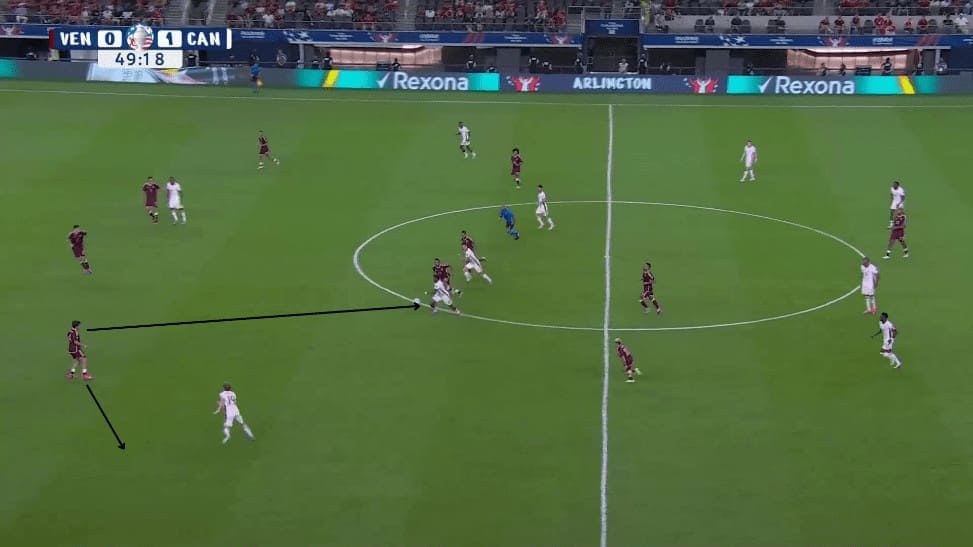
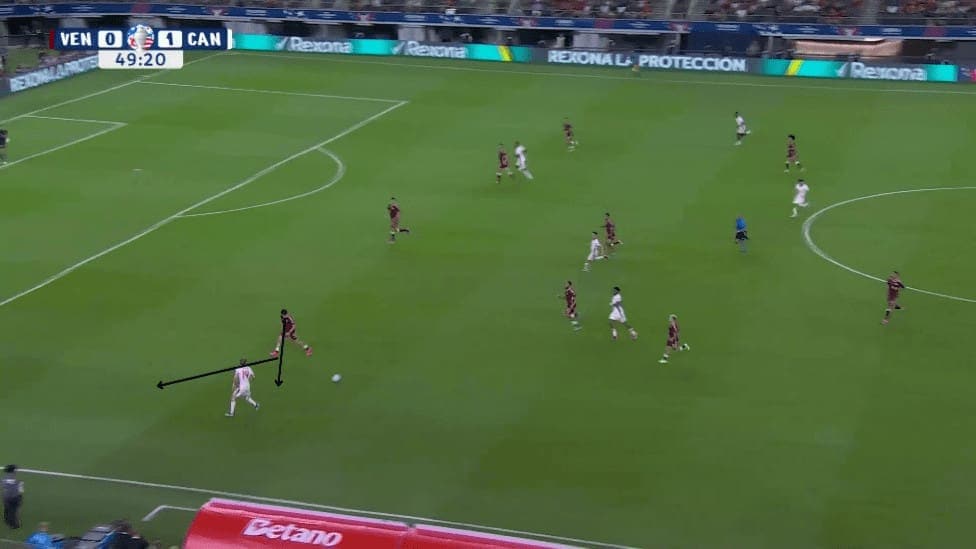
In man-to-man marking, his nature always looks for bodies crashing to destabilize the dribbler and slow down the rival’s possession.
He also forces the rival to wick inner channels with course and distances between him and the right centre-back.
In that order, his strength, in addition to his reading of the game, makes him capable of adapting to multiple wingers’ profiles.
Aramburu also constantly defends his back well, expecting static battles, as stated before.
He takes care of the distance between him and the right centre-back and avoids the wingers running in behind.
However, his capacity to correct going back and measure a tackle to the limit is linked to his focus and mentality.
His decision-making is very precise regarding actions that require adrenaline and a reading of the game.
His strong physique (1.76m, 71kg) is not only a good weapon in his running power or his imposing tackles, but he is also a good player in aerial duels.
Considering his velocity is good, and he is always physically paired with wingers, he is an excellent full-back biotype to compete at the first level.
Jon Aramburu Offensive Awareness
Aramburu is not a technically-privileged player, but he understands his limitations turning around his own axis and making difficult passes.
In the build-up, Aramburu is a safety-first player, accurate and not too risky with passing; still, he knows when and how to progress.
His most common way to progress is accelerating with progressive runs; his impetus and lower body power after recovery make his first forward step very dangerous.
He showed this at Copa América, notwithstanding he is better in the defensive phase.
He advances when the time asks, frequently accompanying if his winger needs him overlapping to create an advantage and with good tools to penetrate into the rival box.
Despite his repertoire is not so varied when he is in the final third, his powerful acceleration is effective in wide combinations and arriving at the final line to make cutbacks or out-swinging crosses, also he allows the winger to move into half-spaces providing the width to create spaces.
Likewise, his ability to make crosses is decent.
He is a real threat on the inverted side (left-back) if he has time to think and execute in-swinging crosses.
From the right, his technique to assist is not as clean as would be ideal, but he constantly tries, with attitude and some accuracy, to obtain collective advantages by pinning or sinking the opponent’s defensive line.
These types of attacks are always via overloaded wings.
There are two things that Aramburu has not incorporated into his offensive repertoire.
Firstly, the arrival to the isolated side — he is still not imposing or instinctive in attacking the far side; the second one is moving into half-spaces to underlap or consolidate the possession — although he has played as a holding midfielder, as a right-back, his passing range is not good enough to enhance build-up starting from inner channels.
Nevertheless, he is a good option to experiment with, including as a right centre-back in the build-up, considering the pitch in front of him.
Where Jon Aramburu Makes a Difference
As mentioned, Aramburu’s strengths are mainly defensive ones.
He frequently looks for activity, proposes duels, and stays close, focused, and inside the match.
Only Nicolás Tagliafico (Argentina) was near his numbers in tackles — a full-back who is generally known as a fighter.
In duels, considering he had many individual battles during the matches, no one participated as much as him.
In that sense, the context was important.
Firstly, vs Julian Quiñones, Mexico looked to him more than once in positional attacking, intentionally creating a direct duel for Mexico, but Aramburu’s entry was surprising.
He imposed himself after 20 minutes on the pitch, short-circuiting that finishing rival way.
Secondly, vs Jamaica, Aramburu found a large number of duels through the movement that Jamaica’s attackers made; Aramburu did not let them turn in front of the goal, he was always aggressive and accurate.
Finally, Jacob Shaffelburg and Alphonso Davies with Canada tried something different; they insisted on attacking spaces in behind and facing the duels quickly, avoiding Aramburu’s body orientation, timing, and reading.
However, he did not lessen, notwithstanding it was a difficult match for him.
Going back again and again, he was instinctive and provided solutions for how to stop Canada’s attacks.
On the other hand, offensive full-backs at Copa América 2024 abounded.
Profiles like Alphonso Davies, Matías Viña, or Alexander González (who had more crosses p/90 than anyone) were awesome in the final third.
Nevertheless, Aramburu makes an offensive impact thanks to his progressive runs, which his acceleration and powerful carry provide him.
He can activate one-twos after recognising any potential dynamic superiority in each part of the right side, as the example below shows.
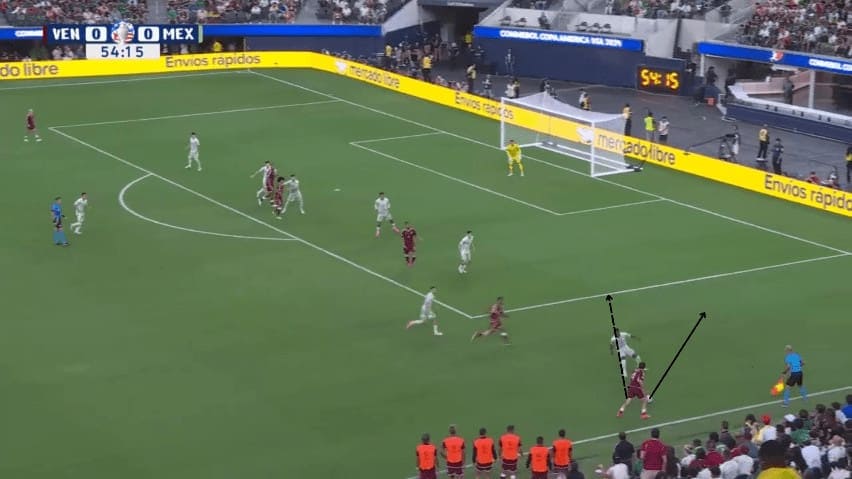
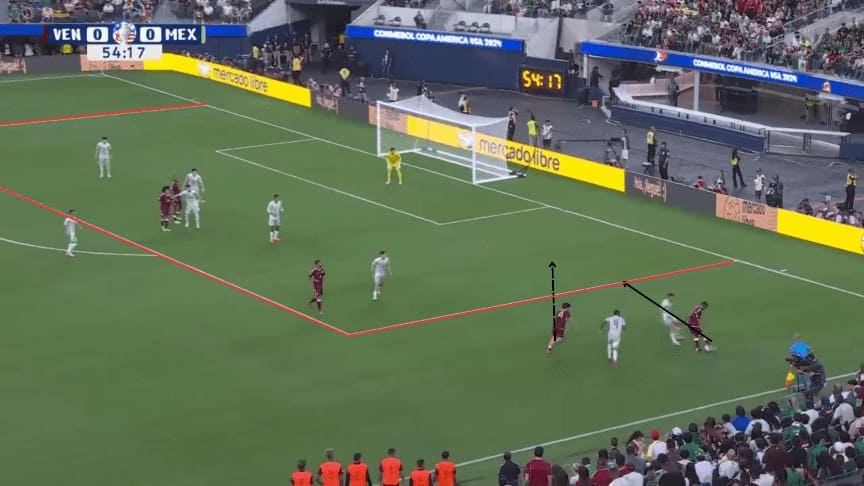
Cases like Davies and Viña have a more powerful and quick lower body to execute those runs or a cleaner passing technique, but they are not as solid as Aramburu defensively.
It’s tough to find a full-back as balanced as this, but Aramburu has been growing in both areas (offensive and defensive).
Obviously, for example, Daniel Muñoz dominates something that Aramburu does not — he is a top threat attacking the isolated side.
Venezuela needed ways to defend and progress the sides, including their main engine rooms, and they found a solution in Aramburu.
He participated in duels, made tackles, and averaged more assists than anyone at the tournament despite attacking not being his main ability.
Brilliant numbers for his first big commitment and official debut with the senior national team.
How Important Could Jon Aramburu Be At Real Sociedad?
Real Sociedad already signed Sergio Gómez from Manchester City.
If they are looking for him as a potential left-back starter, he would be an extended full-back who likes to arrive in the final line.
So a classic full-backs couple in Real Sociedad may be a nice endorsement to enhance Imanol Alguacil’s game model—creating an asymmetric defensive line with Sergio Gómez at maximum width and Aramburu safeguarding as right centre-back in possession, attacking deeper sporadically.
Even if Sergio Gómez will not be the left-back, Aramburu can build a good balance in that position, as a right-back or right centre-back, with Gómez as LWB.
His versatility and competitiveness are a wild card for Imanol Alguacil, who is looking for security in a league with very good wingers in general.
It is not a secret that Aramburu has so much competition in the defensive line.
Hamari Traoré was crucial this past year, Álvaro Odriozola has a current contract, and Aramburu pushes while exploiting his opportunities, as he did when he was paired with Lamine Yamal vs Barcelona and could do vs top dribbler-wingers like Vinícius Júnior, Nico Wiliams or Abde Ezzalzouli.
His versatility to play as left-back or right-back, along with his impetus and performance at the Copa América, suggest he is pushing hard for an important role, and Sergio Gómez’s arrival insinuates it.
Conclusion
Aramburu’s potential development is in process, but his maturity, intelligence, and metrics make him one of the most promising full-backs in South America.
He has the continent’s DNA, a special formation, and an unusual biotype.
The truth is that a defensively solid full-back like him in a team of the first level as Real Sociedad is very valuable to his teammates and his coach, allowing some interesting offensive configurations with a safety model and the capacity to contain top wingers.
Jon Aramburu is a solid investment from Real Sociedad in the full-back area for the long term, but his present is already awesome, as his Copa América showed.

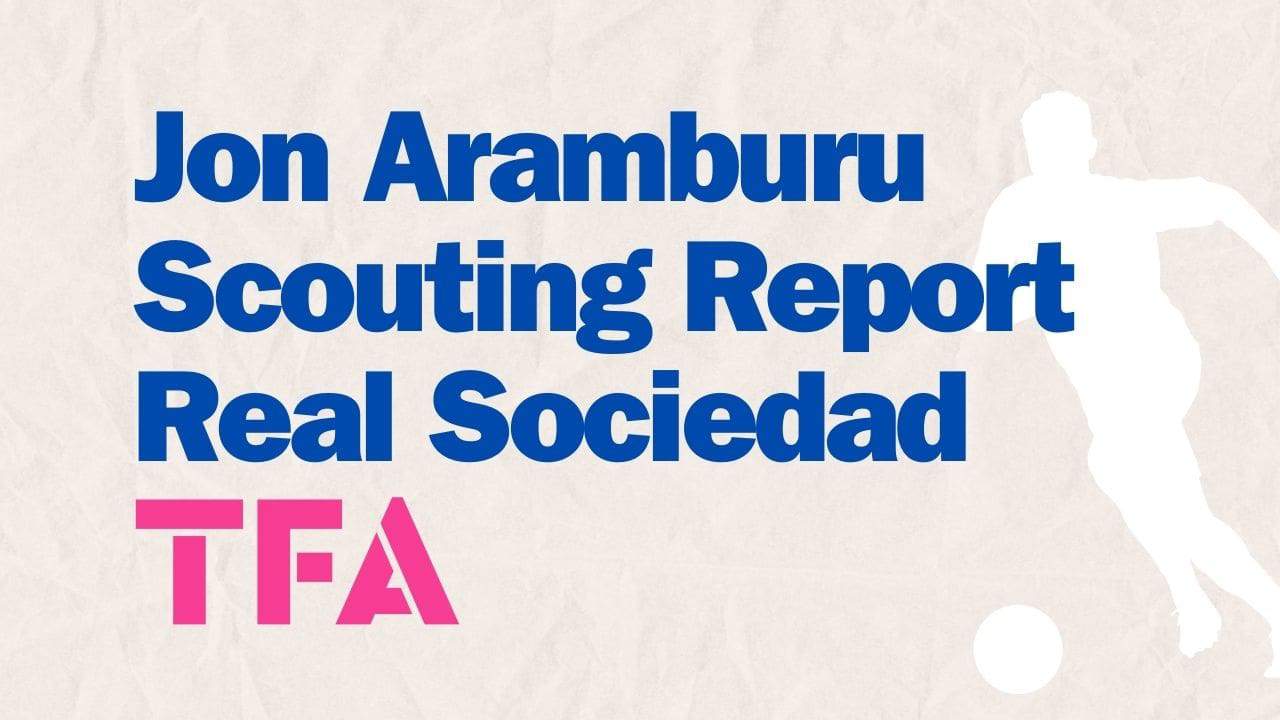
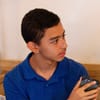



Comments